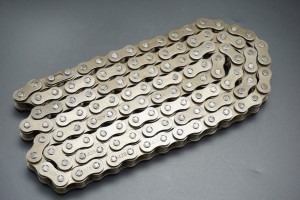Roller chains are fundamental building blocks in various industries and play a vital role in efficiently transmitting mechanical power. From bicycles to industrial machinery, roller chains are a reliable means of transmitting power and motion. Behind the deceptively simple design lies a sophisticated manufacturing process that ensures durability and performance. In this blog, we delve into the fascinating world of roller chain production, revealing the steps involved in making these fundamental mechanical marvels.
1. Material selection:
The initial stages of roller chain manufacturing involve careful selection of suitable materials. Typically, high-quality carbon steel or stainless steel alloys are chosen for their superior strength and wear resistance. Selected materials undergo rigorous quality checks to ensure they meet the required specifications before proceeding to the next stage.
2. Metal wire drawing:
Once a suitable material is obtained, the manufacturing process begins with metal drawing. In this step, the selected alloy is drawn through a series of dies, gradually reducing its diameter and forming a long, continuous wire. This line serves as the basis for creating the individual chain links.
3. Wire annealing:
To enhance the wire’s ductility, strength and resistance to stress, it undergoes a process called wire annealing. Heating the wire to high temperatures and then cooling it slowly allows the metal to acquire the desired properties. Annealing also helps to reduce internal stresses and improve the machinability of the wire in subsequent stages.
4. Form a chain:
The wire, which has been properly annealed, goes to the next stage, where it is fed into a specialized machine that forms the links. This machine cuts the wire into individual segments, each segment representing a potential link. These segments are then formed into the unique “figure eight” shape unique to roller chains.
5. Heat treatment:
In order to improve the strength, hardness and wear resistance of the chain, the formed chain links undergo a heat treatment process. This involves heating the links to high temperatures and rapidly cooling them, which imparts the desired properties to the metal. Heat treatment significantly increases the durability and load capacity of the roller chain.
6. Assembly and lubrication:
After the links have hardened and cooled, they are assembled into a continuous ring by interconnecting the ends of each link. The roller chain is now ready for lubrication, which is critical to minimizing friction and reducing wear. Lubrication not only prolongs the life of your chain, but also improves its overall efficiency and performance.
7. Quality control:
Before roller chains leave the manufacturing facility, they go through rigorous quality control inspections. These inspections ensure that each chain meets required specifications and adheres to the strictest industry standards. Conduct tension, hardness, fatigue and other tests to ensure the reliability and durability of the roller chain.
The manufacturing process of roller chains, while complex, reflects the precision and attention to detail required to manufacture these vital mechanical components. Through careful selection of the right material, skillful shaping of the wire and heat treatment of the links, the roller chain is transformed into a reliable power transmission. With sophisticated quality control measures, roller chains continue to serve a range of industries, enabling efficient power transmission for countless applications.
Post time: Jul-10-2023

